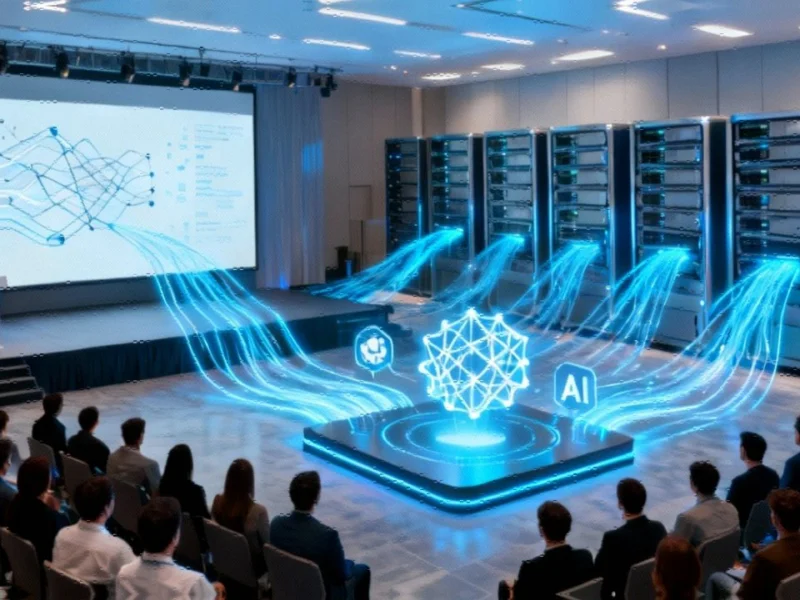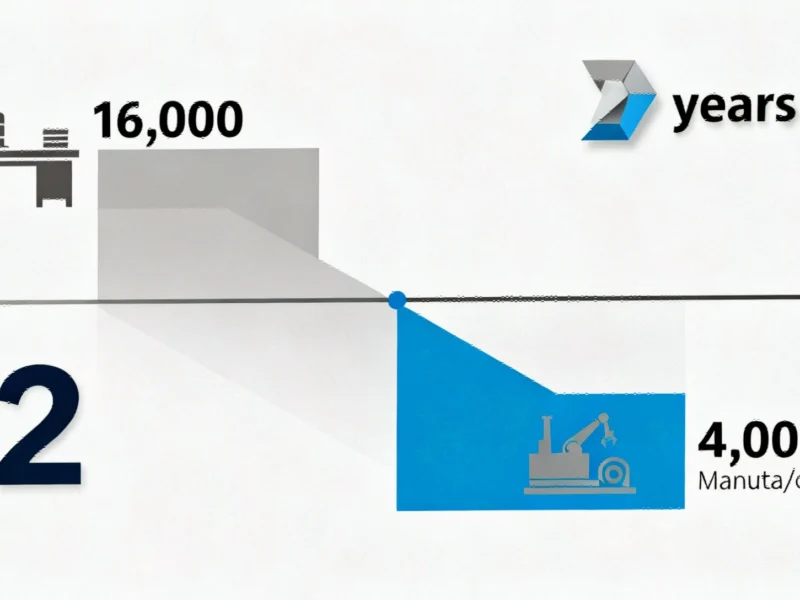Note: Featured image is for illustrative purposes only and does not represent any specific product, service, or entity mentioned in this article.
NetApp’s Vision: Bringing AI to Data Instead of Data to AI
At NetApp Insight 2025, the storage giant unveiled a fundamental shift in how enterprises approach artificial intelligence infrastructure. Rather than forcing organizations to move massive datasets to AI platforms, NetApp is pioneering technology that brings AI capabilities directly to where data resides.
“The NetApp data platform is the core heartbeat of the intelligent data infrastructure,” CEO George Kurian told factorynewstoday.com in an exclusive discussion. “We’re delivering on the promise we made to clients last year about bringing AI to your data, and we’re making it significantly easier to use AI with that data.”
AFX Disaggregated Storage: The Foundation for AI Transformation
The centerpiece of NetApp’s announcement was the AFX disaggregated storage infrastructure, which combines DX engines with AFX storage platforms to create a new paradigm for AI workloads. This approach eliminates the traditional bottleneck of copying and migrating data to AI applications, instead enabling real-time AI processing directly on stored data.
Kurian emphasized that this represents a significant departure from conventional storage solutions. “We operate at two different levels of the stack,” he explained. “While others are talking about storage, we’re talking about storage and data intelligence combined.”
AI Data Engine: Simplifying Complex Data Management
Complementing the AFX infrastructure is NetApp’s new AI Data Engine (AIDE), a comprehensive service designed to streamline the entire AI data lifecycle. AIDE addresses the critical challenges of preparing data for AI consumption while ensuring protection and currency without creating redundant copies.
The platform’s versatility extends across multiple data formats, from traditional file, block, and object storage to emerging requirements for AI workloads. “We’re now handling vector embeddings and tokenized data formats for LLM access, semi-structured data like Apache Iceberg tables and Parquet files, plus traditional CSV and JSON structures,” Kurian noted.
Navigating Global Talent Challenges: The H-1B Visa Impact
Beyond technological innovation, Kurian addressed significant policy challenges affecting the tech industry. The proposed $100,000 application fees for H-1B visas could dramatically reshape how companies access global talent. Recent technology sector developments show increasing concern about how such policies might impact innovation leadership.
Kurian reflected on how these changes might have affected his own journey, having immigrated to the United States for education and building his career in technology leadership. The discussion highlighted how global talent strategies are becoming increasingly crucial for maintaining competitive advantage in the AI era.
Government Business Amid Shifting Priorities
NetApp’s approach to public sector business continues to evolve as government priorities shift toward AI and data security. The company’s focus on intelligent data infrastructure positions it well to address growing concerns around data sovereignty and secure AI implementation in government contexts.
These industry developments reflect broader market trends where established technology providers are adapting to new regulatory and security requirements while advancing their AI capabilities.
Competitive Differentiation in the AI Data Landscape
While Kurian maintained his typical reluctance to name specific competitors, he was clear about NetApp’s unique position. “Our differentiation comes from treating data as an intelligent asset rather than just storage capacity,” he stated.
This perspective aligns with related innovations across the technology sector, where companies are increasingly competing on their ability to derive intelligence from data rather than simply storing it efficiently.
Market Implications and Future Direction
The announcements at Insight 2025 signal NetApp’s strategic pivot from traditional storage provider to intelligent data infrastructure company. This transition comes at a critical time as enterprises grapple with the practical challenges of implementing AI at scale.
As market trends continue to emphasize AI-driven transformation, NetApp’s approach of bringing AI to data rather than moving data to AI could become the dominant paradigm for enterprise AI implementation.
The broader implications extend beyond commercial applications, touching on ethical considerations and societal impacts of AI adoption across various sectors.
Channel Strategy Evolution
NetApp’s partner ecosystem remains crucial to delivering these new capabilities to market. The company’s channel strategy continues to emphasize enabling partners to deliver comprehensive AI data solutions rather than just storage products.
This approach recognizes that successful AI implementation requires deep expertise in data management, security, and workflow integration—areas where channel partners provide essential value beyond basic technology deployment.
As enterprises continue their AI journeys, NetApp’s focus on intelligent data infrastructure represents a significant evolution in how organizations can leverage their existing data investments while building toward AI-driven futures.
This article aggregates information from publicly available sources. All trademarks and copyrights belong to their respective owners.



